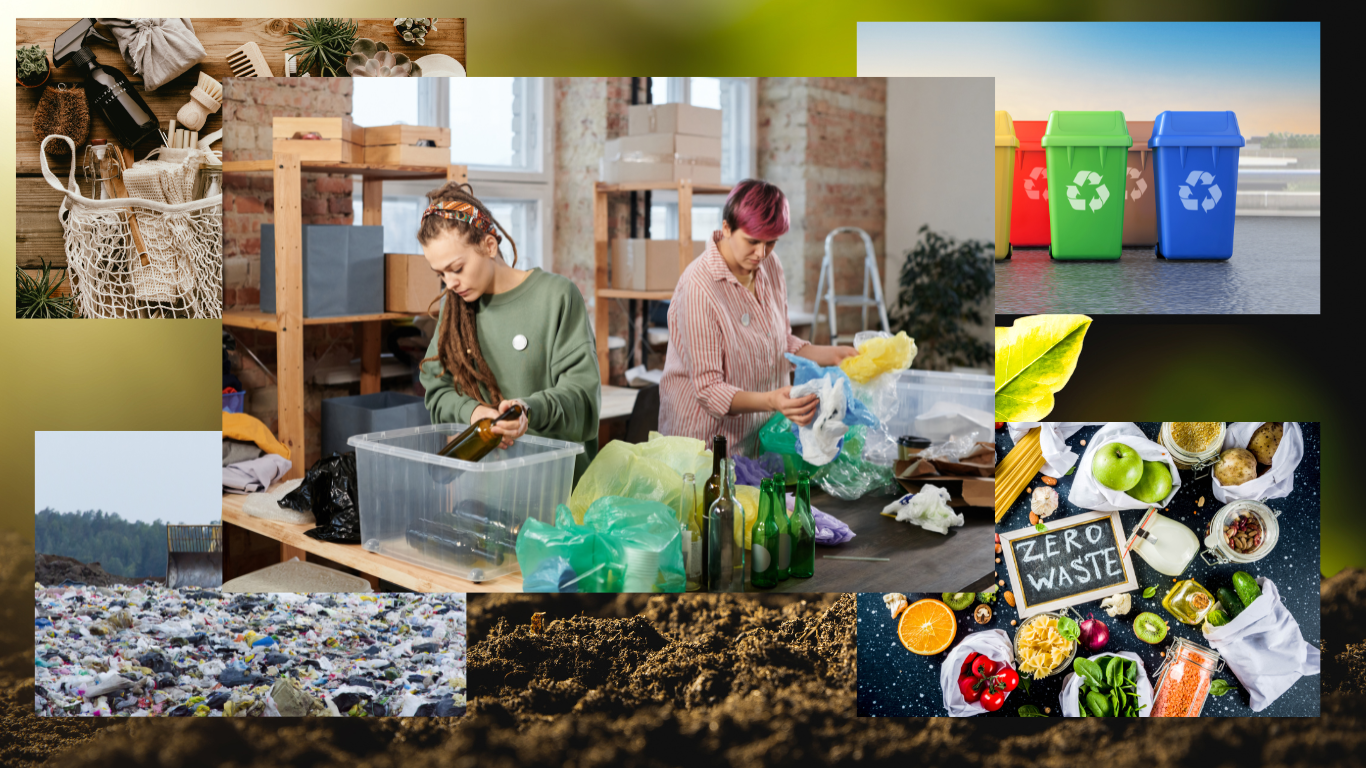In an age where climate change is a pressing concern, small and medium sized enterprises (SMEs) can play a vital role in fostering sustainability and environmental stewardship. By focusing on sustainable raw materials, entrepreneurs have the chance to create businesses that not only contribute positively to the planet but also thrive in the global marketplace. This article will explore five promising materials, recycled materials, biomass, sustainable packaging, renewable energy technologies, and water purification systems, while providing actionable steps for starting a business with these resources. The goal is to inspire and empower individuals who may be facing challenges in their lives to pursue innovative and eco friendly business ventures.

1. Recycled Materials: Transforming Waste into Wealth.
The Opportunity.
The recycling industry is on the rise, driven by increasing awareness of environmental issues and the movement toward a circular economy. SMEs have the potential to capitalize on this trend by collecting, processing, and selling recycled materials.
Steps to Start.
- Market Research: Investigate the types of recyclable materials available in your community, such as plastics, metals, and paper.
- Establish Collection Points: Collaborate with local businesses, schools, and community centers to set up recycling bins.
- Invest in Basic Equipment: Depending on your budget, consider purchasing shredders, balers, or sorting tools. You can start small and expand as your business grows.
- Build Relationships: Network with local recycling facilities or manufacturers interested in purchasing your processed materials.
- Promote Your Business: Use online platforms like Amazon, Etsy, or your own website to sell products made from recycled materials.
Example:
Imagine a venture that collects aluminum cans from local cafes and schools. With a modest investment in a can crusher, the entrepreneur can compact the cans for resale to recycling centers. This simple business model not only generates income but also contributes to reducing waste in the community.
2. Biomass: A Renewable Resource for Energy.
The Opportunity:
Biomass represents a renewable source of energy derived from organic materials. As the world shifts towards cleaner energy solutions, businesses that focus on biomass can make a significant impact.
Steps to Start:
- Identify Biomass Sources: Look for local sources of organic materials, such as agricultural byproducts, wood waste, or food scraps.
- Create Collection Partnerships: Work with farmers, grocery stores, and restaurants to set up a collection system for organic waste.
- Invest in Processing Equipment: Start with essential tools for composting or bio digestion, considering smaller scale options to keep costs low.
- Develop Value Added Products: Create biofuels, organic fertilizers, or energy products from the collected biomass.
- Sell Your Offerings: Utilize platforms like Amazon or local farmer’s markets to reach customers interested in sustainable energy solutions.
Example:
Consider a business that gathers discarded fruits and vegetables from local grocery stores and converts them into biofertilizer. By investing in composting bins, the entrepreneur can turn waste into a high value product for gardeners and farmers, promoting a circular economy.
3. Sustainable Packaging: The Future of Eco Friendly Solutions.
The Opportunity:
As consumers increasingly prioritize sustainability, the demand for eco-friendly packaging solutions is growing. SMEs that develop biodegradable or compostable packaging can meet this rising need.
Steps to Start:
- Research Sustainable Materials: Investigate options like cornstarch based materials, recycled paper, or mushroom packaging.
- Create Prototypes: Start designing sample packaging products for local businesses to test.
- Invest in Equipment: Depending on your product, you may need molds, printers, or basic manufacturing tools. Start with affordable options to minimize initial costs.
- Establish Partnerships: Connect with eco conscious businesses that require sustainable packaging solutions.
- Market Your Brand: Leverage social media and ecommerce platforms to promote your sustainable packaging products to a global audience.
Example:
A budding entrepreneur could create packaging made from seaweed, a renewable resource. By investing in a small scale production process, they can offer sustainable alternatives to traditional plastic packaging, appealing to brands focused on environmental responsibility.
4. Renewable Energy Technologies: Innovating for a Sustainable Tomorrow.
The Opportunity:
The renewable energy sector is expanding rapidly, and SMEs can contribute by providing raw materials or technologies for solar and wind energy solutions.
Steps to Start:
- Explore Renewable Technologies: Research which renewable energy technologies are most applicable in your area like solar panels, wind turbines, or bioenergy systems.
- Source Raw Materials: Build relationships with suppliers of components needed for renewable technologies, such as solar cells or wind turbine parts.
- Invest in Training: Consider enrolling in online courses or local workshops to gain expertise in renewable energy technologies.
- Create DIY Kits: Develop kits for solar panel installation or offer installation services for renewable energy systems.
- Promote Your Solutions: Market your products through online platforms and social media to reach customers interested in renewable energy solutions.
Example:
An entrepreneur could launch a business that provides DIY solar panel kits. By sourcing affordable solar cells and creating comprehensive installation guides, they can empower homeowners to harness solar energy, making it accessible and affordable.
5. Water Purification Systems: Ensuring Access to Clean Water.
The Opportunity:
As water scarcity becomes a global issue, businesses that offer affordable water purification solutions can have a profound impact while generating profit.
Steps to Start:
- Study Water Purification Technologies: Familiarize yourself with various purification methods, such as filtration, UV purification, and reverse osmosis.
- Source Components: Identify suppliers for essential materials and components for water purification systems.
- Develop Prototypes: Start by creating basic water purification systems that can be tested and refined over time.
- Collaborate with NGOs: Partner with non-profit organizations focused on providing clean water to underserved communities, leveraging potential grants and funding.
- Market Your Solutions: Use e-commerce and social media platforms to reach customers in need of affordable water purification options.
Example:
A small business could design a simple water filtration system using locally sourced materials. By targeting rural areas with limited access to clean water, they can provide a valuable product while making a positive social impact.
Conclusion: An Inspiring Path Forward.
Starting a business centered on sustainable raw materials is not only a way to combat climate change but also an opportunity to create a brighter future for yourself and your community. These waste are out there in volumes. By exploring those five recycled materials entrepreneurs can build a successful and meaningful ventures.
Frequently Asked Questions.
1. What is the typical star up cost for a sustainable materials business?
Start-up costs can vary widely, but many sustainable ventures can be launched with under $1,000, particularly if you begin on a small scale and grow from there.
2. How can I effectively promote my sustainable products?
Utilize social media marketing, create a user friendly website, and leverage e-commerce platforms like Amazon or Etsy to reach a wider audience. Emphasize the environmental benefits of your products to attract eco minded consumers.
3. Are there funding opportunities for sustainable business initiatives?
Yes, numerous grants and funding programs exist for businesses focused on sustainability and renewable energy. Research local and national opportunities, and apply for those that align with your business vision.
4. Is it feasible to run a sustainable business from home?
Absolutely! Many sustainable businesses, such as those focused on recycling or crafting eco friendly products, can be operated from home, significantly reducing overhead costs.
5. How can I measure my business’s environmental impact?
Regularly assess your practices, including waste reduction, resource conservation, and overall carbon footprint. Set measurable goals to improve sustainability and report your progress to stakeholders and customers.Launching a sustainable business is a rewarding journey that can lead to personal fulfillment and positive change. With creativity, determination, and a commitment to sustainability, anyone can turn their vision into reality and contribute to a healthier planet.
